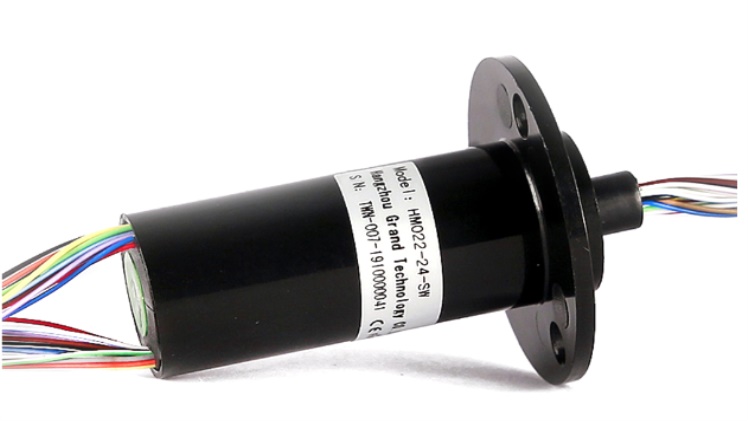Slip ring technology has revolutionized the field of rotating systems by enabling the seamless transmission of signals and power between stationary and rotating components. In applications such as CT imaging and capsule slip ring systems, slip rings play a crucial role in ensuring continuous rotation and reliable data transmission. This article serves as an introduction to slip ring technology in CT and capsule slip ring systems, discussing the fundamental principles, applications, and the significance of slip rings in these domains.
Understanding Slip Ring Technology:
Slip rings are electromechanical devices designed to transmit electrical signals and power across rotating interfaces. They consist of two main components: the stationary part and the rotating part. The stationary part, also known as the stator, is connected to the stationary component, while the rotating part, known as the rotor, is connected to the rotating component. The primary function of a slip ring is to establish and maintain electrical connections between the stationary and rotating parts, allowing for the transmission of signals and power without the need for tangled cables or wires.
Importance of Slip Ring Technology in CT Imaging:
In the field of CT imaging, slip ring technology is of paramount importance. CT scanners require the continuous rotation of the gantry, which houses the X-ray source and detectors, to capture multiple cross-sectional images of the patient’s body. The slip rings used in CT systems enable the seamless transmission of power, control signals, and data between the stationary and rotating components, ensuring uninterrupted rotation and precise synchronization of the imaging process. Without slip rings, the rotational movement necessary for comprehensive image acquisition would be challenging to achieve, leading to compromised image quality and diagnostic accuracy.
Applications of Slip Ring Technology in Capsule Systems:
Capsule slip ring systems have gained significant attention in recent years, particularly in applications such as endoscopy, industrial inspections, and remote monitoring. Capsule slip rings are miniaturized versions of traditional slip rings, designed to fit within small, compact capsules or devices. These slip rings enable the rotation of cameras, sensors, and other components within the capsules, facilitating a wide range of applications. In endoscopy, for instance, capsule slip rings allow for the smooth rotation of the camera inside the patient’s body, providing real-time visuals and aiding in diagnosis and treatment. In industrial inspections, capsule slip rings enable the rotation of cameras or sensors in tight spaces, allowing for efficient examination and monitoring of critical machinery.
Advancements in Slip Ring Technology:
Over the years, slip ring technology has witnessed significant advancements to meet the evolving demands of CT imaging and capsule slip ring applications. Manufacturers have introduced contactless slip rings, also known as wireless slip rings or rotary transformers, which eliminate the need for physical brushes or contacts, thereby reducing wear and tear and improving signal quality. Fiber optic slip rings have also emerged as a viable option, enabling high-speed data transmission and immune to electromagnetic interference. These advancements in slip ring technology have contributed to enhanced performance, reliability, and longevity in CT and capsule systems.
Conclusion:
Slip ring technology plays a vital role in CT imaging and capsule slip ring systems, facilitating continuous rotation and reliable signal/power transmission. In CT imaging, slip rings enable seamless rotation of the gantry, resulting in accurate and high-resolution cross-sectional images for diagnostic purposes. In capsule systems, slip rings allow for the rotation of cameras, sensors, and other components, enabling various applications in medical, industrial, and monitoring fields. As slip ring technology continues to advance, we can expect further innovations to enhance the performance and functionality of CT and capsule systems, opening new possibilities for these essential domains.


